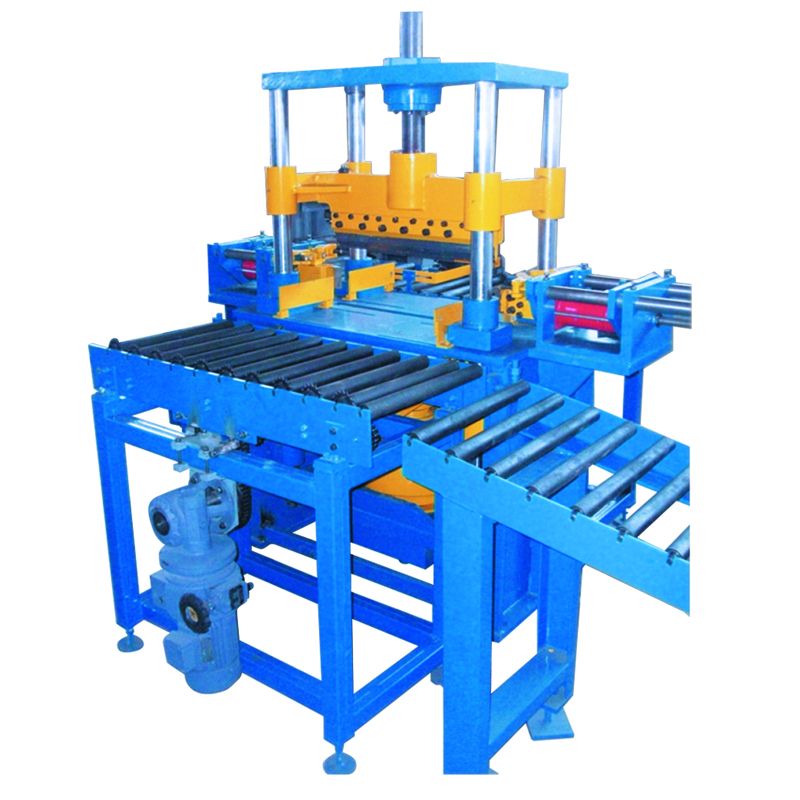Block machinery is designed to accommodate different raw materials and compositions used in block production through various adaptable features and adjustments:
- Adjustable Molds: Block machinery often incorporates interchangeable or adjustable molds that can be customized to produce blocks of varying sizes, shapes, and designs. These molds can be modified to suit different raw material compositions.
- Variable Pressures and Vibrations: Machines can be calibrated to apply different levels of pressure and vibrations to the raw materials during the block formation process. This adaptability allows for adjustments based on the characteristics of the materials being used.
- Mixing and Batching Systems: Some block machinery includes flexible mixing and batching systems that can accommodate different ratios and compositions of raw materials. This adaptability allows for the production of blocks using varying aggregates, cement types, or additives.
- Material Feeding Mechanisms: Block machinery can have adaptable material feeding mechanisms that cater to different consistencies and compositions of raw materials. This flexibility ensures efficient handling and processing of diverse materials.
- Control Systems and Programming: Advanced block machinery may feature programmable control systems that allow operators to adjust parameters such as compression time, vibration frequency, and material flow rate. This adaptability optimizes block production according to the specific raw materials used.
- Material Testing and Calibration: Some machinery includes systems for testing raw materials before production, ensuring their compatibility and quality. This data might be used to calibrate the machinery for optimal performance with varying materials.
- Compatibility with Additives or Reinforcements: Certain block machinery is designed to handle additional additives or reinforcements within the block composition. This adaptability enables the production of specialized blocks with enhanced properties.
- Continuous Monitoring and Adjustment: Advanced machinery may have sensors and monitoring systems that constantly assess the quality of produced blocks. This information allows for real-time adjustments to optimize production when using different raw materials.
- Material Recycling and Reuse: Machinery might be adaptable to handle recycled materials or by-products from other processes, supporting sustainable practices in block production.
The adaptability of block machinery ensures versatility in accommodating different raw materials and compositions, china block machinery allowing for flexibility in the production of blocks tailored to specific requirements or quality standards. This adaptability is crucial in addressing the variability often encountered in raw materials used in block manufacturing.
What quality control measures are employed in block machinery production to ensure consistency and durability?
Quality control in block machinery production involves several measures to ensure consistency and durability of the manufactured blocks:
- Material Testing: Raw materials used in block production undergo rigorous testing for quality and consistency. This includes testing aggregates, cement, additives, and other components to ensure they meet specified standards before use.
- Mix Design Control: Precise control over the mix design is crucial. Block machinery often employs computerized batching systems that accurately measure and control the proportions of raw materials, ensuring consistent block quality.
- Mold and Machine Calibration: Regular calibration of molds and block machinery is essential to maintain accurate dimensions, shapes, and surface finishes of the blocks produced. This prevents variations and ensures uniformity across batches.
- Compression and Vibration Control: Machinery controls compression forces and vibration frequencies during block formation. Consistent application of these forces ensures proper compaction, reducing voids and improving block strength.
- Temperature and Moisture Control: Monitoring and controlling the curing environment, including temperature and moisture levels, is critical for achieving optimal strength and durability in blocks. Automated systems maintain ideal curing conditions.
- Quality Checks during Production: Automated systems may conduct in-line inspections during block production, using sensors to detect inconsistencies or defects in real-time. This allows for immediate adjustments to maintain quality.
- Random Sampling and Testing: Periodic sampling of produced blocks for quality testing is common. These samples undergo various strength, density, and durability tests to verify compliance with standards.
- Record-Keeping and Traceability: Maintaining comprehensive records of production parameters, quality test results, and raw material sources allows for traceability and analysis of any issues or deviations in block quality.
- Training and Operator Expertise: Well-trained personnel operating the machinery play a crucial role in ensuring consistent production. Training programs and regular skill enhancement sessions contribute to maintaining quality standards.
- Quality Management Systems: Implementing quality management systems such as ISO standards ensures adherence to strict quality control procedures throughout the production process.
- Feedback and Improvement: Analyzing data from quality control measures allows for continuous improvement. Feedback mechanisms ensure that any issues identified are addressed promptly to enhance overall block quality.
By implementing these quality control measures at various stages of block production, block machinery manufacturers ensure that the produced blocks meet stringent quality standards, exhibit consistent characteristics, and possess the necessary durability for their intended applications.

